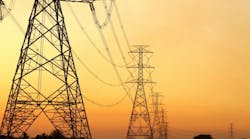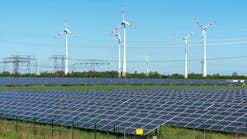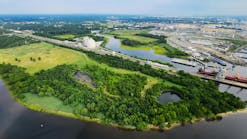7 Key Aspects to Consider When Planning and Implementing Large Energy Projects for the Future.
Implementing and controlling large energy projects are complex processes requiring integrated engineering, project management, and collaboration across various sectors. These projects include renewable energy facilities, power transmission and distribution networks, and large-scale fossil fuel production facilities, which have been developed over several years and with many billions of investment dollars.
Success in these ventures depends on proper planning, engagement of various stakeholders, risk analysis, and flexibility to change course in the light of changing circumstances. Conversely, energy projects are associated with regulatory, cost, environmental, and public risks. That’s where proper planning comes in.
If the following best practices are adopted, the latest technology is used, and cooperation between industry and government is encouraged, organizations can successfully implement projects that will help to meet energy needs and promote sustainability and economic development.
- Strategic Planning and Feasibility Study: First, it is crucial to carry out a detailed feasibility study. These studies determine the technical, environmental, economic, and feasibility of laws and regulations. For instance, the SunZia Transmission and SunZia Wind projects, which have been recognized as the biggest clean energy infrastructure project in the history of the United States, went through more than 17 years of permitting and approval processes before raising $11 billion to start construction. This lengthy preparatory phase highlights the necessity of proper planning for large energy projects,
- Engagement of Stakeholders and Early Participation: It is important to involve stakeholders at the beginning of the project process. This ensures that internal and external stakeholders are determined, including project managers, engineers, environmental specialists, procurement officers, and even the community. This ensures that all those involved understand the process and potential issues that may arise. This way, project communication is on point, and project objectives align with the stakeholders' expectations.
- Learning from Past Projects: Learning from past projects helps inform decision-making and avoid repeating common mistakes. A thorough review of project documentation and stakeholder feedback can help identify the successful and the not-so-successful. This form of reflection enables the teams to learn from their mistakes to ensure that future projects are more effective.
- Risk Analysis and Flexibility: It is essential to apply a forward-looking risk assessment approach throughout the project life cycle. This ensures that potential risks are identified early and the causes are well understood to develop appropriate risk mitigation strategies. Flexibility in the design and management of the project ensures that the project can be adapted to changing regulations, new technologies, or changes in ownership to ensure that the project stays on course despite unknown factors.
- Project Management and Communication: A review of the proposed teams and their working methods shows that clear communication and efficient collaboration tools are essential in managing teams, especially in energy projects. It is crucial to have clear communication to ensure everyone on the team is aware and ready to accomplish project goals. There is a possibility of applying for advanced project management software that may improve processes, track progress, and increase the effectiveness of collaboration between different teams.
- Multi-Sector Collaboration and Regulatory Navigation: Many large energy projects are cross-sectoral and have to be managed within complex regulatory frameworks. To ensure that project goals align with government policies and public needs, working with government agencies, private sector actors and local communities is essential. For instance, the SunZia project made news for the right reasons due to its progress in collaborating with different sectors.
- Siting and Environmental Aspects: Siting and configuration of energy facilities are key determinants of project success. Siting of renewable energy is a decision-making process that covers the facility’s lifecycle, from permit and approval construction, operation, and eventual takeover or dismantling. This ensures that siting decisions are informed and made with state and local officials and other stakeholders.
Pattern Energy Group Inc. is an excellent example of the above considerations in action. It finally began the project construction after more than 17 years of waiting for permits and approvals and raising $11 billion in financing. This comprehensive preparation included conducting a thorough feasibility analysis, engaging stakeholders, identifying and mitigating risks, and involving cooperation between different sectors. The projects are predicted to provide environmentally friendly power to 3 million people and create more than $20 billion of economic return, proving that observing these best practices is vital for developing large energy projects.
The effective development of big energy infrastructure projects is a systematic approach that involves planning, engagement, risk analysis, project management, and cross-sector cooperation. By following these best practices, project managers will be well-positioned to mitigate risks that are inherent in energy projects and develop sound, economical, and socially acceptable projects




